
Fes has so much to offer to any visitor and it is a good idea to arrive prepared with ideas of what to look for, this guide will help you with that. If time is not an issue I would suggest reading our story "Getting lost in Fes", a fun adventure of taking random turns and finding interesting spots. Otherwise, I would recommend to spend at least 2-3 days there and if this is all the time you have - focus on finding the attractions from this list.
The Blue Gate (Bab Boujloud, Bab Bou Jeloud)
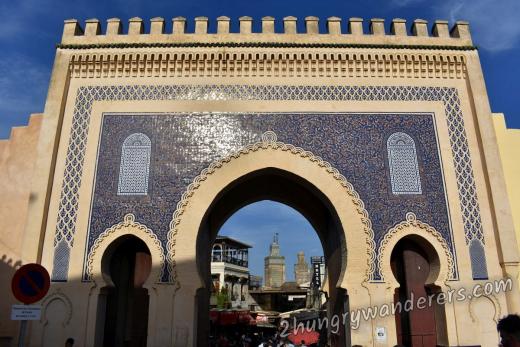
The most important gate of the city wall, ornately decorated with tiles which are blue on the outer facade and actually green on the inside. Perhaps this signifies that passing through the gate you are entering a different world. The current structure was build in 1913 and a curious thing to note is that the gates close and lock from the outside - this surely has something to do with the French administration ruling the country at that time (and almost only Moroccan residents inside the medina).
Cars are not allowed to go through the gate and inside the medina, so if you are traveling with a lot of luggage and want to stay inside the old city it is very convenient to find accommodation close to the Blue Gate, that's what we did and it was a great choice. Right through the gate there is a small square with several restaurants and various vendors, from there you can choose between two of the main streets leading into the heart of the medina.
Zaouia De Moulay Idriss II
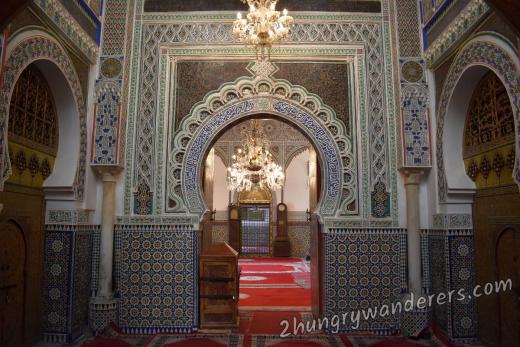
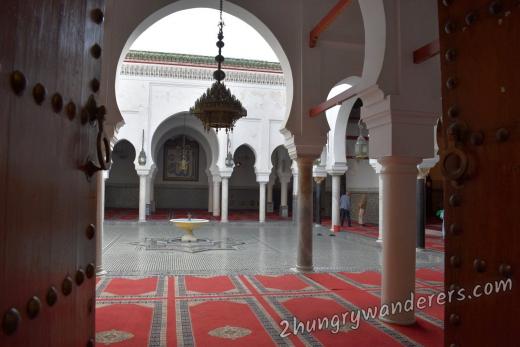
Idris II was the ruler of Morocco between 807 and 828, he is also the founder of the city of Fes, he made the city capital and was also responsible for making it an economic and cultural center. This complex holds his tomb and as a religious site non-Muslims are not allowed to enter. The minaret is the tallest in Fes, combined with the green pyramidal roof are very easy to spot when looking at the city from above. Finding one of the entrances is more difficult as from short distance the mentioned features are hidden by other buildings clustered nearby. Even without going inside one can take a peek at the beautiful and rich decorations inside. It is definitely worth it going around and checking out the side doors, there is a big yard with a fountain in the middle to be found.
Nejjarine Museum of Wood Arts and Crafts
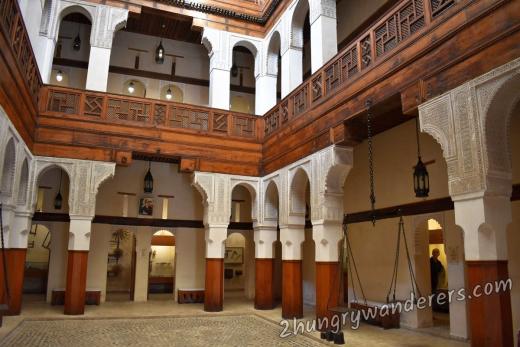
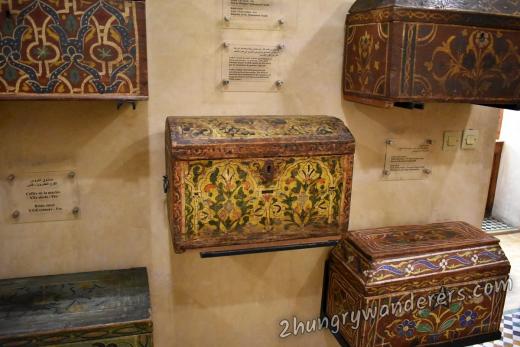
That's one of the real gems in Fes! The building is a sight by itself, a wonderfully restored fondouk (caravanserai) - a combination of a market and an inn. Up until the 18th century traveling merchants stored and sold their goods on the ground level by day and by night slept in the rooms on the higher floors. Now the museum displays a rich collection of items from many regions and eras including windows, doors, shelves, chests, musical instruments and much more. There are also exhibitions themed around different types of wood, wood crafting tools and techniques.
Medersa El Bouanania (Bou Inania Madrasa)
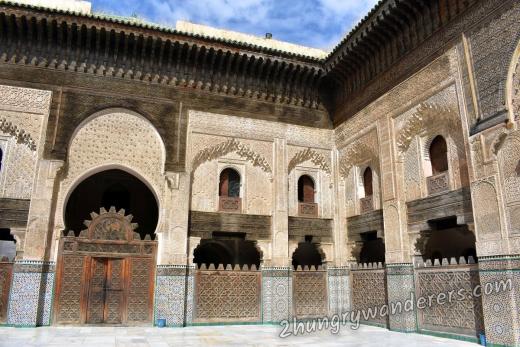
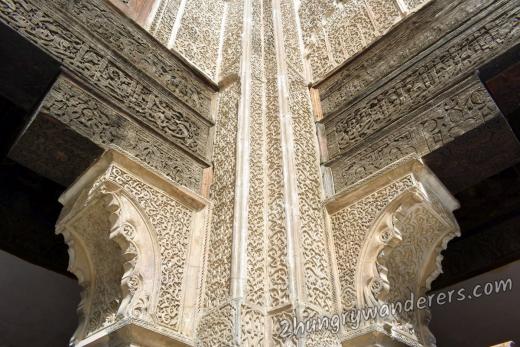
One of the very few religious sites in Fes where non Muslims are allowed to enter is this madrasa (school). In the past this complex was both an educational center and a mosque, the minaret is still standing and is visible from most of the city, commonly photographed trough the horseshoe shape of The Blue Gate. Interesting features are the marble columns in the mosque, all walls are covered in colorful zellige (tiles), and the delicate carvings on the cedar friezes match the patterns on the plaster panels.
Place Rcif
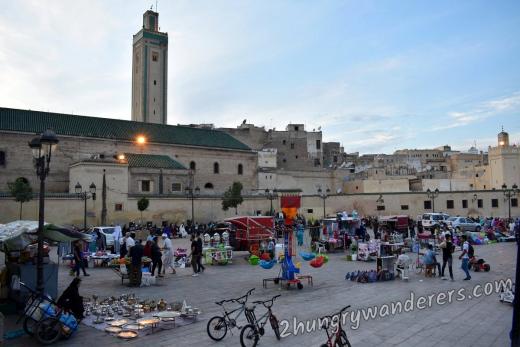
This square features one of the big gates to the old city - Bab Rcif, a large mosque and a big open area surrounded by small shops and cafes. The mosque is the city's Friday mosque and predates the square by a century, it's minaret is one of the tallest and most distinctive in the area with it's square base and green tiled highlights.
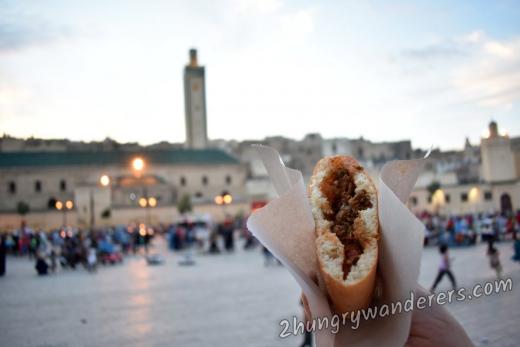
The place actually comes to life in the late afternoon when vendors and local people fill the square, it is a great spot to get some street food, sit on the stairs near the wall to enjoy it while watching the people around you. There are some fun activities for kids, like a trampoline and bikes for rent, so many families gather there to socialize while the little ones play.
Al Quaraouiyine Library
This place deserves the label "hidden gem", mainly because it actually looks closed. With the huge wooden doors shut and vendors occupying the stairs one can easily decide to move on, but if you are brave enough to knock and lucky enough somebody to open the door - be happy, you will see some unique things, it is the oldest working library in the world!
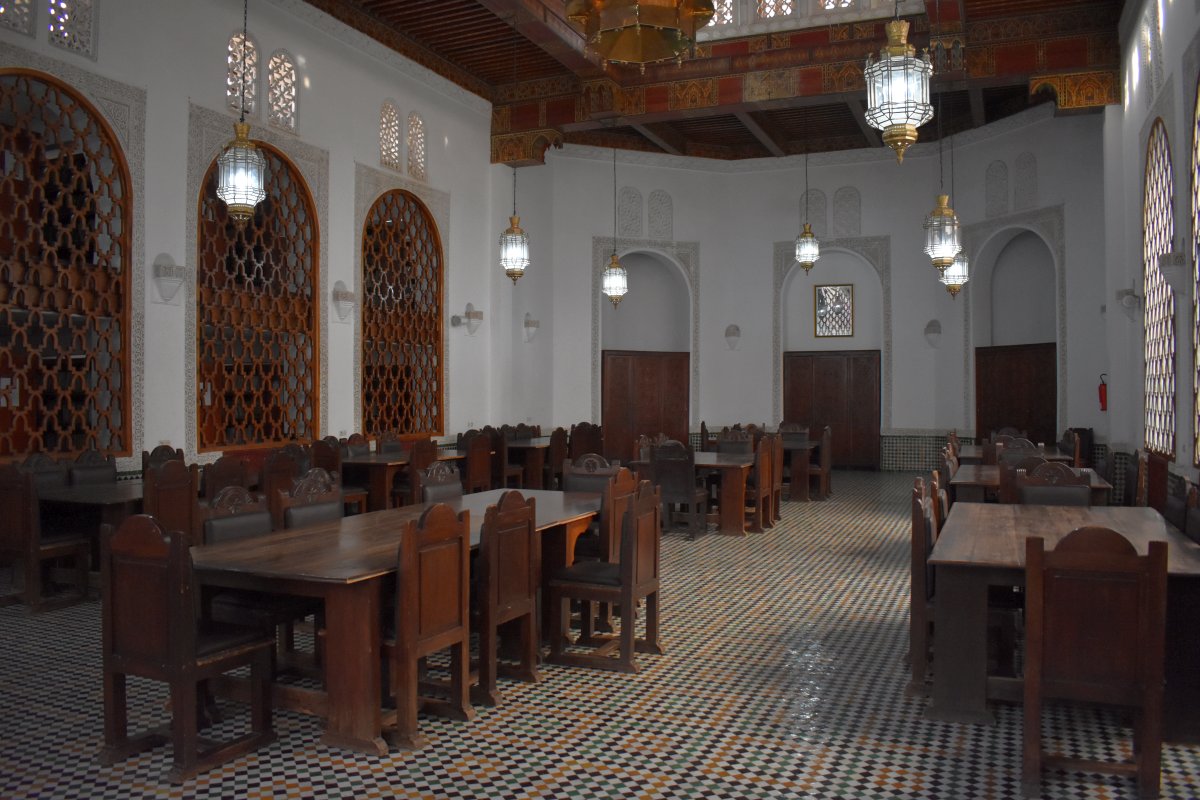
Time magazine included the library in the list of World's Greatest Places for 2018, which should be a reason enough to visit, but let me give you some highlights. Built in 859 by Fatima al-Fihri, the daughter of a wealthy merchant along with a mosque and university with the same name, the library was where most important texts in the country were kept for centuries.
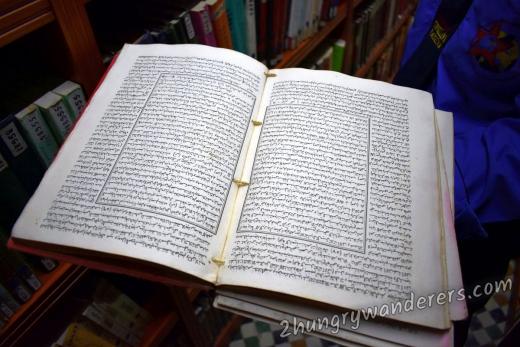
As the building lost some of it's significance during the centuries, parts of its unique collection were scattered among other libraries and museums, now it holds about 4000 texts. A restoration project began in 2012 and from 2016 the library is (kind of) open to the public and scholars. Today it features a climate controlled room for storing the most unique old books, including a 9th century Quran in its original binding.
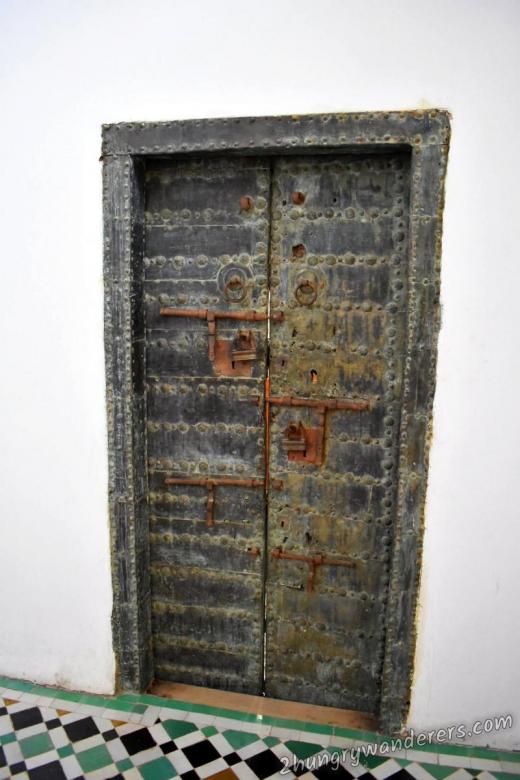
The architecture and decorative details are breathtaking, you will see working fountains and beautiful staircases, but for me personally the most interesting thing was the door to the "vault" - the room where the most precious books were kept. The iron reinforced door installed in the 16th century has a unique security mechanism controlled by four separate locks. Each lock had an individual key, kept by one of the chief librarians, the contents of the room were so valuable all four people had to be present with their keys to access the written treasures inside.
Borj Nord (Museum of Arms)
Positioned on a hill overlooking the old city of Fez Borj Nord is the best preserved of the ten bastions around the city. This magnificent example of 16th century European architecture was actually designed and build by Portuguese captives and has a very close resemblance of some fortifications built in Italy and Portugal during the Renascence.
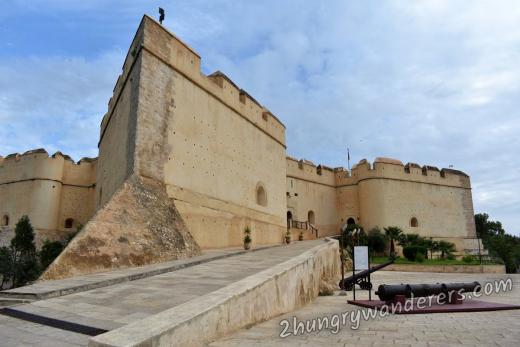
Nowadays the fort holds more than 5000 items from the Museum of Arms, with a significant part of those - more than 800 on display. Visitors can see great examples of Moroccan weapons from different eras, interestingly notable are the shifts in influences on technologies and design - changing from African in the early days to European in the 17-18th century. There are many displays of various weapons from other countries as well, but also pay attention to the building itself. Visiting Borj Nord is an exciting experience not just for weapons enthusiasts - look at the thick walls and defense mechanisms of the fort. Don't forget to get to the roof, amazing views of Fes and great photo opportunities.
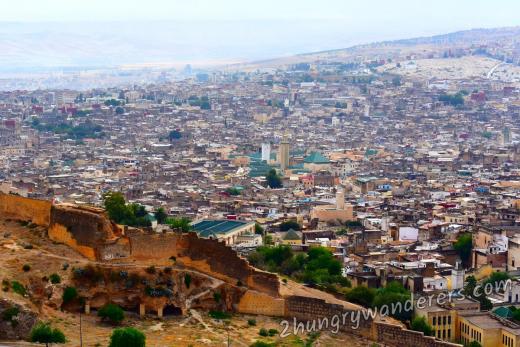
Unfortunately taking photos is not allowed on the exhibition floors, but the only item I truly regret not photographing is a revolver with a built-in bottle/can opener!
Chouara Tannery
The largest, most impressive and popular in Fes - if you want to see only one tannery that's it. It is actually a complex with many leather workshops and shops surrounding and sharing the "tannery" - numerous vats for cleaning, softening and dying the leather pieces.
When you get near the tannery "guides" lurking in the streets will offer to take you there - you don't really need them, finding the place on Google Maps and following the signs and arrows on the streets is very easy. If you are not firm in declining their services expect to pay a fee when you arrive at the entrance, even if the "guide" didn't help you at all.
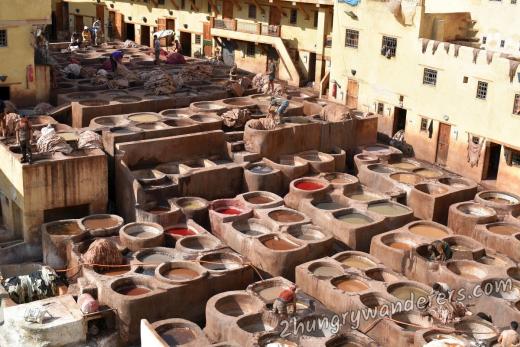
Being the top in its class Chauara Tannery charges an entrance fee, which may be waived if you make a large purchase inside, but otherwise - don't forget that the guy giving you a bunch of fresh mint at the door will ask for money when you are leaving.
What is the mint for? When a staff member takes you to the roof you will understand immediately and will do your best to stick it inside your nose. Many of the vats below contain urine and pigeon excrement, even some of the dyes used smell awful, this, combined with the aroma of hundreds raw animal skins, creates a powerful and unpleasant smell your only other chance to experience is in the inner circles of hell.

The view however is as captivating as the smell is foul - tens of people carrying skins, pieces of leather, stirring the contents of different colored vats, scraping fur... and tourists doing their best to take photos with one hand and keep the precious green stalk under their nose with the other.
Our guide explained how things work - first the raw skins are soaked in urine to soften them, then excess fur and bits are removed, then the pieces depending on their quality, thickness and source go through different treatments and finally are being dyed and dried before moving them to the workshop.
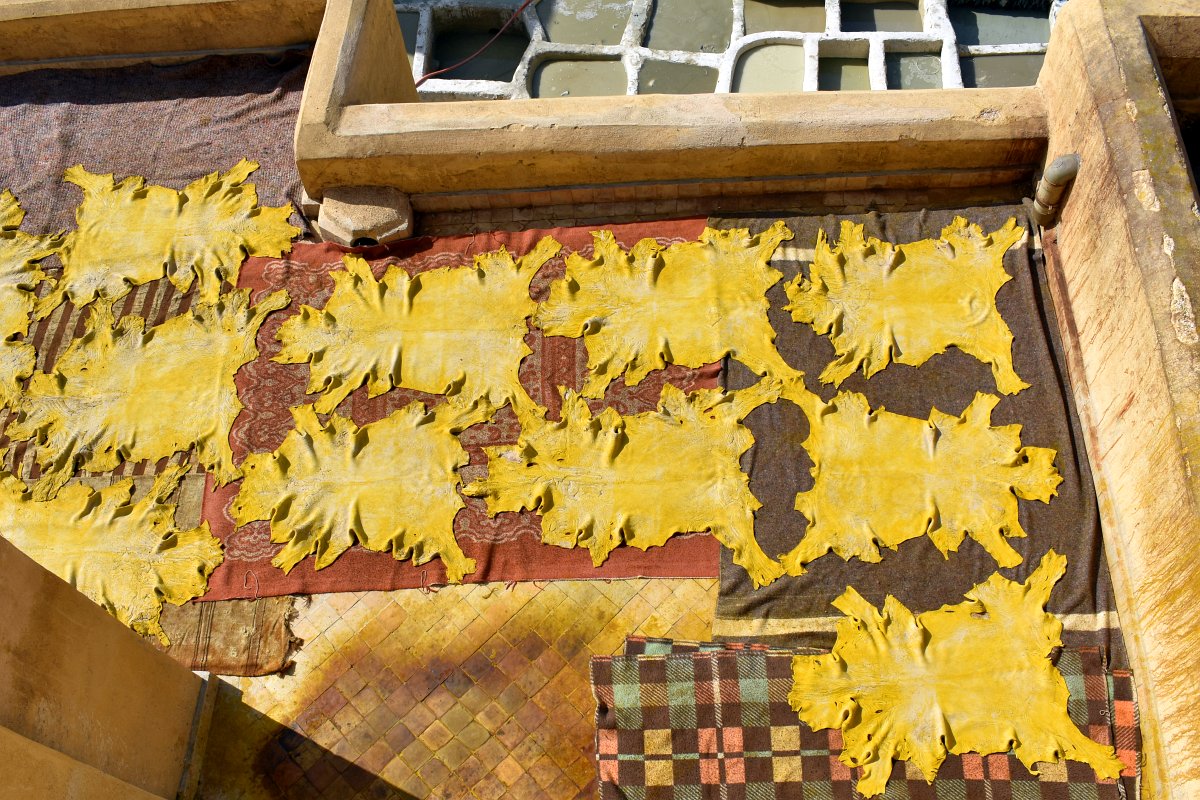
Then he took us to the shop where anything you can think of is made of leather - from slippers to jackets, wallets, purses, pants, shirts, ties and hats, if you want something made they can accommodate any request for the right price. As usual there is expectation to buy something, but as we had no such intention and wanted to save time we just gave our guide a small tip, which was accepted well - no commission from sale, but no wasting of time with us either.
Marinid Tombs
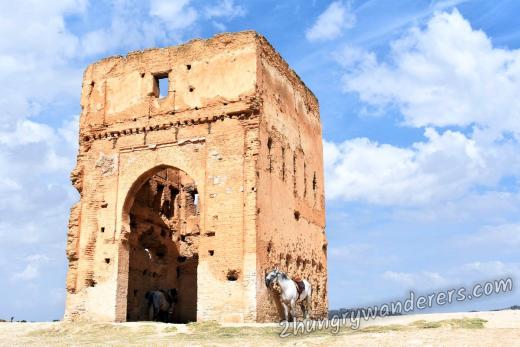
On a hill outside the medina, close to Borj Nord are some ruins called Marinid Tombs. Why? Not based on solid evidence for sure. The two remaining mausoleums have some inscriptions still visible, but they do not contain information about who was buried there. The "Marinid" part in the name comes from the assumption that these are the final resting places for members of the Marinid dynasty, rulers of the region during the time historians believe the tombs were built. In support of this theory is the nearby cemetery and the assumption that members of the royal family have been honored with the most impressive mausoleums in the area.
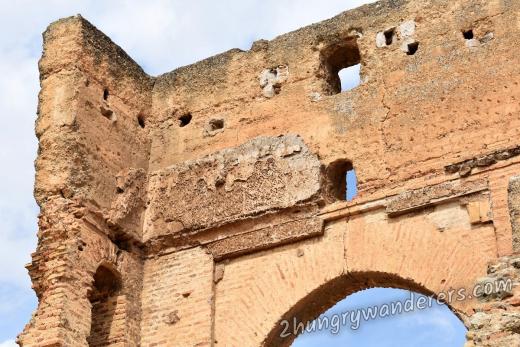
Whatever the truth, a visit to the Marinid Tombs is a rewarding experience, as in addition to visiting the interesting ruins one gets a chance to take a look at the nearby cemetery and caves, more on that in our post "Getting lost in Fes". Also the hill offers beautiful views of the city and is a great sunset spot.
The Golden Gates of The Royal Palace
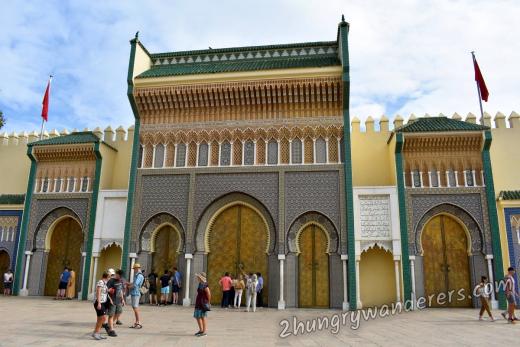
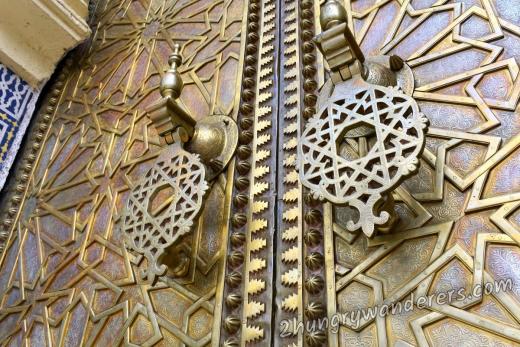
The Royal Palace in Fes or the Dar el-Makhzen is closed to the public, but the gates are a major photo spot - beautiful and shiny, actually covered in brass, surrounded by carved cedar wood and colorful tile work. Go as early as possible to avoid waiting for a chance to make a great photo, or be patient - the gates attract crowds of tourists every day. The main gate is largest and most popular, but check out the smaller ones on the sides - there are less people there and they are as beautiful as the main attraction.
Comments